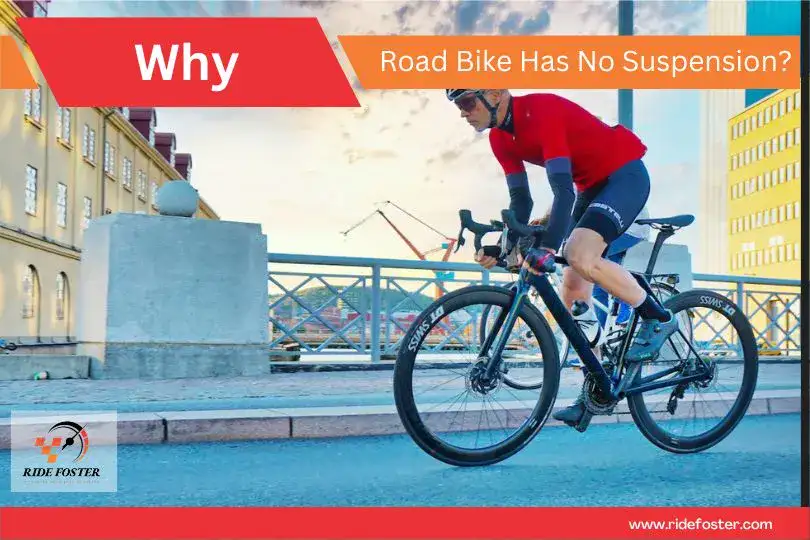Road bikes are designed for speed and efficiency and can go quite fast.
However, many factors can affect how fast a road bike can go, such as the rider’s weight, terrain, and wind conditions.
The speed of a road bike depends on many factors, such as the type of bike, the terrain, and the rider’s fitness level.
A road bike can typically reach speeds between 14 and 18 mph.
Table of Contents
- 1 Average Speed on a road bike by experience level
- 2 The factors that affect how fast a road bike can go
- 3 The fastest recorded speeds for road bikes
- 4 Speed record on a bicycle
- 5 4. How to safely and effectively ride a road bike at high speeds
- 6 Is 20 mph on a bike fast?
- 7 How fast can a road bike go downhill?
- 8 How Fast Can an Average Bicycle Go?
- 9 How fast can a road bike go on flat ground?
- 10 Conclusion – How fast can a road bike go?
- 11 You may be interested in:
Average Speed on a road bike by experience level
| Cyclist | Average Speed |
|---|---|
| Beginner | 10-14 mph |
| Medium | 15-20 mph |
| Professional | 20-30 mph |
The factors that affect how fast a road bike can go
Road bikes are designed to go fast.
But several factors can affect how fast a road bike can go.
Here are some of the most critical factors:
- The rider’s fitness level
- The rider’s weight
- The bike’s aerodynamics
- The terrain
- The weather conditions
- The bike’s weight
Let’s take a closer look at each of these factors:
1. The rider’s fitness level
The rider’s fitness level is one of the essential factors in how fast a road bike can go.
A rider who is in good shape and has strong leg muscles will be able to pedal faster and will be able to maintain a higher speed for longer periods than a rider who is not in as good of shape.
2. The bike’s weight
The bike’s weight is also a factor in how fast it can go.
A lighter bike will be easier to pedal and accelerate faster than a heavier bike.
However, a more serious bike may be more stable at high speeds and less likely to get blown around by strong winds.
3. The bike’s aerodynamics
The bike’s aerodynamics also affect how fast it can go.
A more aerodynamic bike will slice through the air more easily and will therefore be able to go faster than a less aerodynamic bike.
However, aerodynamic bikes are often more expensive and may require special clothing or equipment for the rider, such as aero helmets or skinsuits.
4. The surface of the road
The road’s surface can also affect how fast a bike can go.
Smooth, paved roads will allow bikes to roll more efficiently and be faster than rough, unpaved roads.
However, bumpy roads can cause tires to lose traction and may cause cycles to slow down or even crash.
5. Wind conditions
Wind conditions can also affect how fast a road bike can go.
Strong crosswinds can push bikes around and make it difficult to maintain control, while headwinds can slow cycles down significantly.
In general, the wind should not be too much of a factor if you are riding on a well-designed road bike with good tires.
6. The bike’s weight
The bike’s weight is one of the essential factors in how fast a road bike can go.
A lighter bike will be easier to pedal and accelerate faster than a heavier bike.
However, a heavier bike may be more stable at high speeds and less likely to get blown around by strong winds.
The fastest recorded speeds for road bikes
Road bikes are designed to be ridden fast.
And while there are no official records for the fastest speeds achieved on a road bike, some impressive reports have been from cyclists who have hit high speeds on their bikes.
The highest speed ever recorded on a road bike was by Denise Mueller Korenek in 2018, who hit 296.009 km/h (183.932 mph).
Speed record on a bicycle
| Name | Year | Speed |
| Bruce Bursford | 1996 | 334.6 km/h (207.9 mph) |
| Denise Mueller-Korenek | 2018 | 296.009 km/h (183.932 mph) |
| Fred Rompelberg | 1995 | 268.831 km/h (167.044 mph) |
4. How to safely and effectively ride a road bike at high speeds
Riding a road bike is a great way to stay in shape and have fun simultaneously.
However, it is essential to ride safely and effectively, especially when riding at high speeds.
Here are some tips on how to do just that:
- Wear the right gear: The proper equipment is essential for staying safe while riding a road bike.
Make sure to wear a helmet, gloves, and reflective clothing.
- Stay aware of your surroundings: Always be mindful of what is happening around you.
This means keeping an eye out for cars, pedestrians, and other cyclists.
- Ride in the proper lane: When riding on the road, always ride in the far-right lane.
This will help you stay out of the way of traffic and make it easier for drivers to see you.
- Use hand signals: When turning or changing lanes, always use hand signals to let other cyclists and drivers know what you are doing.
- Be predictable: Ride in a straight line, and don’t make sudden turns or changes in direction.
This will help other cyclists and drivers know what to expect from you.
- Follow the rules of the road: Obey all traffic laws, including stop signs and traffic lights.
This will help keep everyone safe on the road.
- Ride defensively: Always assume that drivers cannot see you and be prepared to take evasive action if necessary.
See Related: How much does a road bike weigh?
Is 20 mph on a bike fast?
It depends on what you’re comparing it to.
For instance, 20 mph is considered fast for a beginner cyclist, but it could be faster in the grand scheme.
Experienced cyclists can easily ride twice as fast as that.
So, it’s all relative.
How fast can a road bike go downhill?
A road bike can reach up to 30 miles per hour (48 kilometers per hour) when going downhill.
How Fast Can an Average Bicycle Go?
On average, a bicycle goes about 10-12 miles per hour.
But, of course, this number can change based on several factors, including the type of bike, the terrain, and the rider’s fitness level.
How fast can a road bike go on flat ground?
A road bike can go quite fast on flat ground, especially if it is a racing bike.
The average speed for a road bike on flat ground is about 25 miles per hour.
However, some people can pedal much faster than this.
Conclusion – How fast can a road bike go?
A road bike can go as fast as the rider can pedal.
However, there are limits to how fast a road bike can go.
The frame and wheels of a road bike are not designed for high speeds.
The tires can only take so much pedaling before they start to slip.
Also, the wind resistance increases as the speed of the bike increases.
At some point, the rider will not be able to pedal any faster, and the bike will stop increasing in speed.





![Can You Put Gravel Tires On a Road Bike? [Pros & Cons] Can You Put Gravel Tires On a Road Bike](https://www.ridefoster.com/wp-content/uploads/2022/11/Can-You-Put-Gravel-Tires-On-a-Road-Bike.webp)

